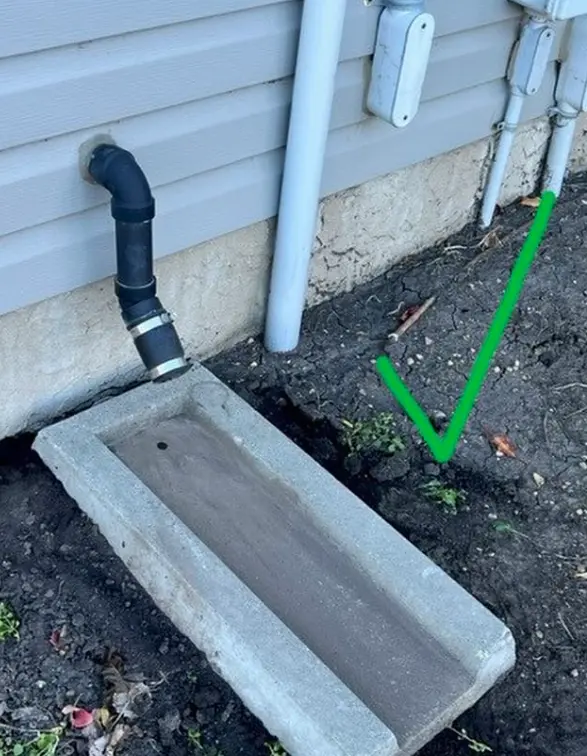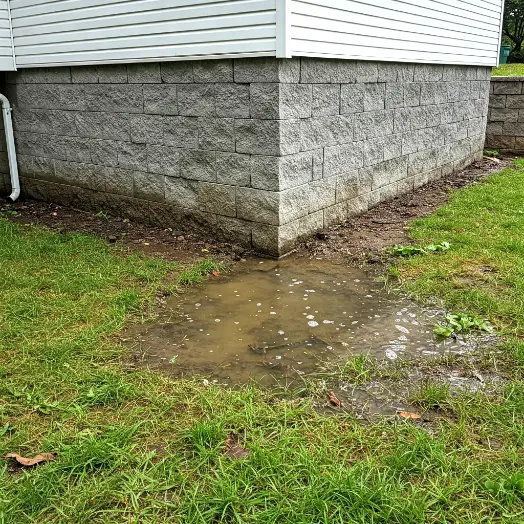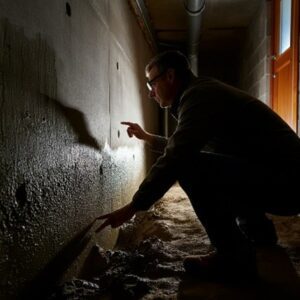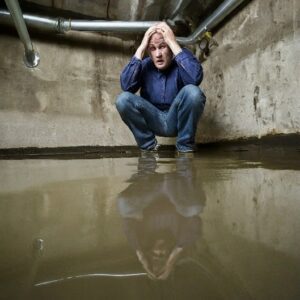Water pooling around your foundation is one of the leading causes of structural damage in homes. In Edmonton, the combination of spring thaw and frequent rainfalls increases the risk of foundation issues due to excess moisture. Without proper drainage, water can seep into your basement, cause foundation cracks, and lead to costly repairs.
To safeguard your home, proactive water management is essential. Below, we explore the best strategies to prevent water from accumulating around your foundation and ensure your home remains protected against moisture-related damage.
-
Optimize the Grading Around Your Home
Proper yard grading is fundamental in directing water away from your foundation. Ideally, the ground should slope away at a minimum of 5% (approximately six inches over ten feet) to prevent water from accumulating near your home’s base.
Steps to improve your yard’s grading:
- Add soil near the foundation to create a gentle slope outward.
- Use dense, clay-based soil instead of loose topsoil to enhance water runoff.
- Regularly inspect for depressions where water collects and fill them accordingly.
-
Maintain Gutters and Downspouts for Optimal Water Flow
Gutters and downspouts play a crucial role in channeling water away from your foundation. When clogged or improperly directed, they allow water to spill over and pool around your home’s perimeter.
Tips for effective gutter and downspout maintenance:
- Clean gutters at least twice a year (spring and fall) to remove debris.
- Ensure downspouts extend at least six feet away from your foundation.
- Install downspout extensions or splash blocks to guide water further from your home.
-
Implement an Efficient Drainage System
A well-structured drainage system is key to preventing water accumulation around your foundation.
Your weeping tile system is the first line of defence. Common in Edmonton homes, it collects and diverts excess water from basements. You can read a detailed post on this subject here: https://shieldfoundationrepair.ca/what-exactly-is-weeping-tile-and-why-is-it-important/
-
Ensure Your Sump Pump Is Functioning Properly
For Edmonton homeowners with basements, a sump pump is a critical defense against water accumulation. Often ignored, a malfunctioning sump pump can lead to flooding and foundation damage.
Sump pump maintenance best practices:
- Test your sump pump before the spring thaw to confirm operational efficiency.
- Clean the intake screen and remove debris to prevent clogging.
- Consider installing a battery backup system in case of power outages.
- Extend sump pump discharge pipe collection trough to minimize water collection at your foundation wall.

Check out our sump pump maintenance guide here: https://shieldfoundationrepair.ca/wp-content/uploads/2024/05/Sump-Pump-Information.pdf
-
Design a Landscape That Supports Water Management
Strategically planned landscaping can enhance water absorption and prevent pooling near your foundation. Thoughtful plant selection and surface materials can significantly improve drainage.
Landscaping tips for optimizing yard drainage:
- Select deep-rooted plants to aid in moisture absorption.
- Avoid placing flower beds directly against the foundation, as they can retain water.
- Incorporate permeable materials such as gravel or mulch to facilitate water dispersion.
-
Seal Foundation Cracks to Prevent Water Intrusion
Even minor foundation cracks can allow water to seep in, leading to long-term structural damage. Regular inspection and timely sealing of cracks are crucial to maintaining a dry basement. While hairline cracks are a normal occurrence in concrete foundation walls, this larger that ¼ inch need to be investigated and assessed.
How to effectively seal foundation cracks:
- Apply a high-quality waterproof sealant or epoxy injection to small cracks.
- Inspect basement walls and floors regularly for early signs of water intrusion.
- When you see significant cracks (larger than ¼ inch) or pooling water, contact Shield Foundation Repair for a professional assessment.

-
Regulate Watering Near Your Foundation
Excessive watering of lawns and gardens near your foundation can contribute to soil expansion and increased pressure on your home’s structure, leading to water-related damage.
Watering tips to prevent over-saturation:
- Utilize a drip irrigation system to control water distribution efficiently.
- Water in the morning to allow excess moisture to evaporate throughout the day.
- Adjust sprinkler positions to ensure water is not directed toward the foundation.
Final Thoughts
Preventing water pooling around your foundation is crucial for preserving the structural integrity of your home. By implementing solutions such as optimizing grading, maintaining gutters, and improving drainage systems, you can minimize the risk of costly foundation repairs.
If you experience persistent water issues or notice signs of foundation damage, consulting a professional foundation repair company is the best course of action. Early intervention can prevent more severe damage and save on long-term repair costs.
For trusted foundation repair and waterproofing services in Edmonton, contact us today! Our team is committed to keeping your home safe, dry, and structurally sound throughout the year. Call 780 760 4900 or use our handy contact form: https://shieldfoundationrepair.ca/contact-shield-foundation-repair/




